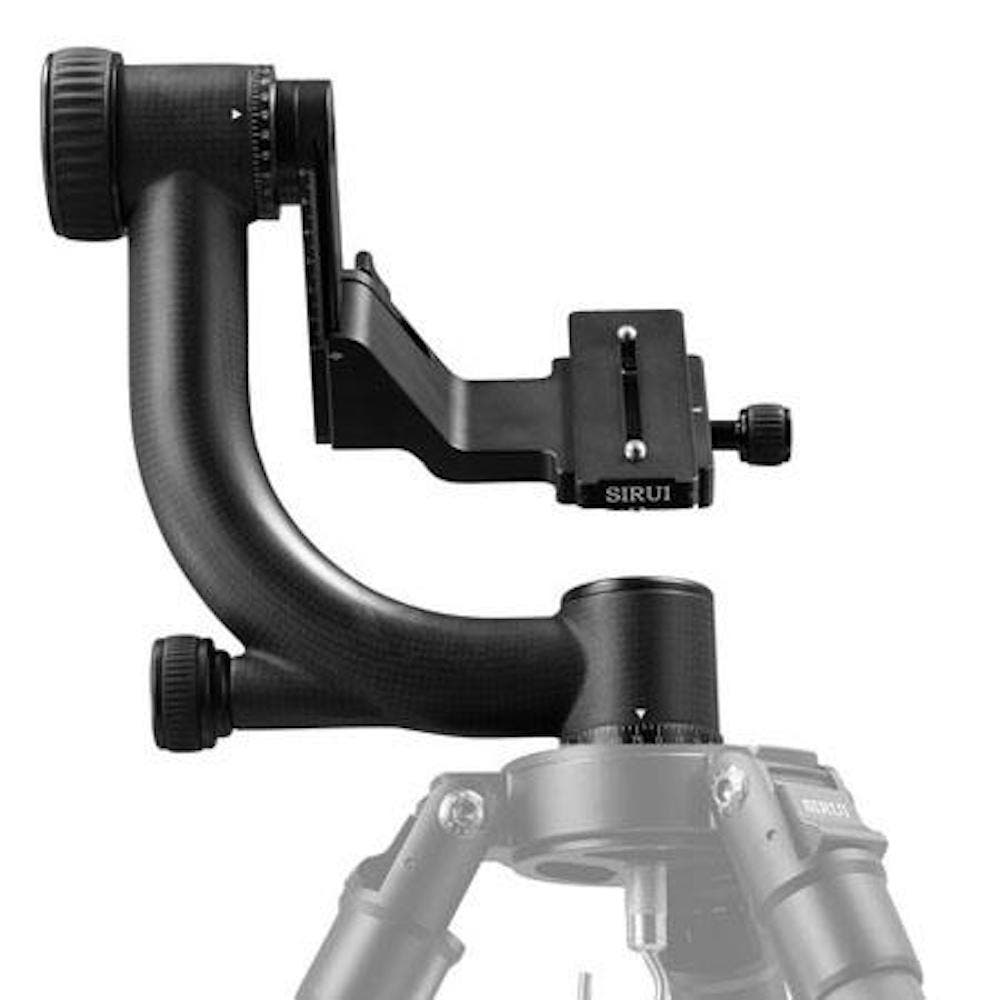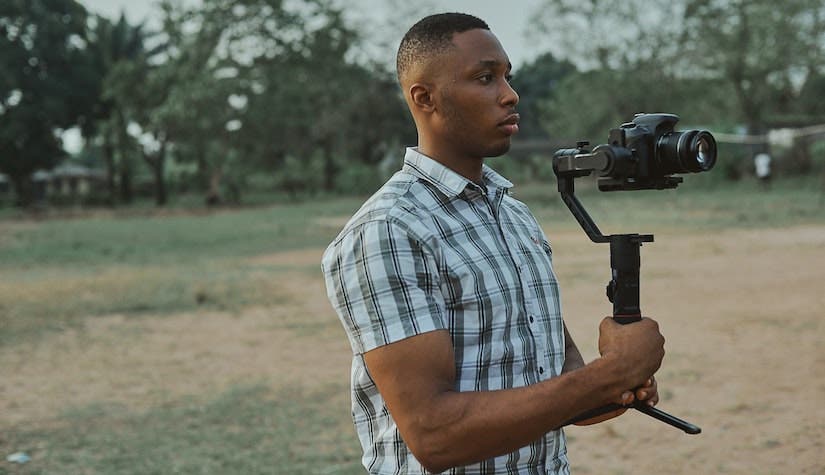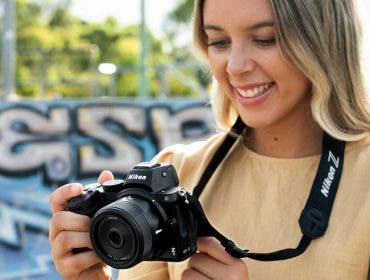A gimbal tripod head allows you to balance weight perfectly so that you can move your camera effortlessly, both vertically and horizontally. With a perfectly balanced gimbal, heavy setups like a 600mm lens and professional camera body can be effortlessly moved with just a fingertip.
Your camera is always ready to shoot with a gimbal since you never need to lock any pan or tilt knobs as you do with a ball head. When the action starts, all you need to do is grab the camera and spin it towards your subject. However, finding the right gimbal tripod head can be tricky. There are a wealth of options out there from a wide range of manufacturers. Here we’ll go over five key tips to understanding gimbals and choosing the right gimbal tripod head for you.

Know The Difference Between a Videography and Photography Gimbal
You’re likely to get a confusing mix of results when you search for the word ‘gimbal’ on the internet. This is because it can refer to both photo and video gimbals. When buying your first gimbal, you don’t want to confuse the two.
In this article, we are discussing non-electronic photography gimbals. This type of gimbal is designed to be mounted on a tripod. Once the tripod is in place, the camera and lens are balanced on it. It might be necessary to rebalance your gimbal if you are making a significant shift in your tripod’s orientation or you switch to a much heavier lens.
A video gimbal, on the other hand, keeps your camera level while it is in motion. It consists of rotating gyros, motors, and other electronic machinery that resist the inertia of your camera as you move it and keep things straight. These can be used hand-held or attached to a moving vehicle, but a tripod would not be necessary. In addition, these also require power to keep the camera level. They have a much smaller weight capacity than a tripod gimbal.
To make your search easier, use the search term ‘tripod gimbal.’ Video gimbals are not designed to be used on a tripod. Meanwhile, photography gimbals are exclusively designed to be used on tripods.
Do You Even Need A Gimbal Tripod Head?
A key question to ask yourself before purchasing a gimbal tripod head is why you want to buy one. Gimbal tripod heads for photography are a specialist purchase and only really necessary for certain types of shooting. They are mostly used by sports and wildlife photographers who have heavy setups but need to be able to move their cameras quickly. If this is something you are looking into or already have some experience with, a gimbal tripod head might be a great option for you. However, if you’re just starting in photography or prefer more static forms, a gimbal probably isn’t necessary for you. Instead, you might want to look for a high-quality ball head for your tripod.
With all the gear options available for photographers, it can get confusing trying to figure out what’s best for you. Although, there are plenty of other tripod head options that might suit your needs better.

Side vs. Cradle Mount
Gimbal heads are available in two different mount styles — cradle mount and side mount. Several manufacturers offer both mount styles for the same gimbal. The classic mounting style is the cradle mount. This is where the foot of the lens is mounted on an L-shaped arm below the vertical pivot point that encloses the foot of the lens. Cradle mount gimbals are a popular choice, and most manufacturers will make a range of cradle mount gimbals. However, they are generally heavier, more expensive, and take up more space than their side-mount counterparts.

With the side mount style of a gimbal, you do away with the L-shaped cradle and clamp directly to the vertical pivot. As a result, the lens foot is 90 degrees off from where it is on the cradle mount. Although side mount gimbals are less popular, they can be cheaper, smaller, and just as effective.

Choose the Right Gimbal Tripod Head for Your Setup
What camera and lens combination you have will determine what tripod gimbal works best for you. All gimbals are designed to balance the weight of the camera and lens on your tripod. The best gimbal for you will depend on how heavy your equipment is, and if it is designed to be attached to the gimbal.
If you don’t have a particularly large camera and lens setup, you may be able to opt for a more lightweight gimbal that can hold up to 10 lbs.
However, if you’ve got a large, heavy telephoto lens, cheaper gimbals may not be able to provide the stability and safety you need, so a more heavy-duty gimbal is best. Many heavy-duty gimbals support up to 20 lbs.
Most gimbals are designed to be used with a lens foot that attaches to your lens to give it extra stability. However, there are additional accessories if you don’t have a lens foot for your lens.

Convertible Gimbals
There are some gimbal tripod heads designed to convert a standard ball tripod head to a gimbal head— for example, the Wimberley sidekick. The ball head must be equipped with a separate panning base lock knob and an Arca-Swiss compatible clamp. If you have that, then it’s just a matter of releasing the ball lock and putting the clamp vertically into your drop notch, following with tightening the ball as tight as possible. Then rotate the sidekick by clamping it into the ball head clamp and releasing the panning base lock knob on the ball head. These types of gimbals can be very handy if you need to carry a regular ball head but want the option of a gimbal top. They tend to be much more lightweight than other gimbals.

Another option for keeping the weight down is to look for a carbon fiber gimbal tripod head. This can easily save you from carrying one additional pound all the time.
Consider Your Budget
Gimbals can range from cheap to very expensive, with some going above $1000. It may be tempting to lean toward the cheaper option. Although, keep in mind that a lower price may mean a lower quality build, less durability, and less stability. Considering that a gimbal is key to keeping your expensive camera gear in place and safe, it’s worthwhile investing in something trustworthy. Although, it doesn’t have to be top of the line.
It’s also worth considering the tripod you intend to mount your gimbal tripod on. Mounting a gimbal head to a flimsy travel tripod could result in your gear setup becoming top-heavy and falling over. Look for a tripod with sturdy and adjustable legs that’s able to hold all of your equipment.
Final Thoughts
Gimbal tripod heads are a great investment piece for sports and wildlife photographers in particular. With a gimbal tripod head, you can quickly capture epic shots of fast-moving subjects with effortless ease and crystal-clear stability. If you’re considering investing in a gimbal tripod head, hopefully these five tips have helped you in making your decision.






